Research Areas
Biofilm Processes
Structure, Dynamics and Modelling

Understanding the biofilm structure from a combined micro and mesoscale perspective is key to assess its dynamics (attachment, growth, detachment) and bridge the biofilm functions to the macroscale processes. The BEL research group combines the use of different biofilm formation platforms, hydrodynamically characterized, with the purpose to:
- Study the effect of environmental conditions on the biofilm’s dynamics and architecture
- Investigate the spatial distribution of microbes in the biofilm (e.g., colonization of biofilm by Legionella pneumophila)
- Model condenser biofouling and particle bed biocidal reactors
- Dynamics of horizontal gene transfer within biofilms
- Performance evaluation of antibiofilm surfaces for industrial, medical and marine settings under controlled hydrodynamics
Industrial and Marine Biofouling
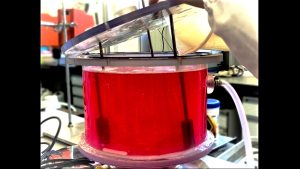
Biofouling has a great economic and operational impact on industrial and marine settings. Deepening the understanding about biofouling is key to optimize productive processes and to prevent and mitigate the problems associated with unwanted biofilms. At BEL, different projects are tackling these challenges:
- Biofouling mitigation water and wastewater systems by the immobilization of biocides in millimetric particles
- Performance evaluation of antibiofilm surfaces for industrial and marine settings under controlled hydrodynamics
Medical – Associated Infections
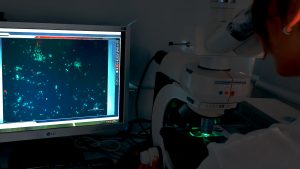
Medical-associated infections are a significant cause of death worldwide, contributing also for prolonged hospitalization and increased associated costs. At BEL, innovative strategies for infection diagnosis, prevention and treatment have been developed:
- Design and development of new natural-based molecules to prevent biofilm-associated infections through quorum-quenching strategies
- Use of NAMs for detection of microorganisms directly in the human body by fluorescence in vivo hybridization (FIVH)
- Development of new antimicrobials using NAMs to treat infection diseases
- Testing of antimicrobial surfaces (mainly anti-adhesive and contact-killing) under controlled hydrodynamic conditions mimicking physiological environments
Biofouling Monitoring Tools
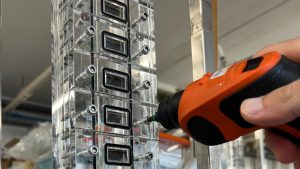
Online biofouling monitoring is an important approach for proactive and timely biofouling management. The BEL group has developed an online, real-time, non-intrusive biofouling monitoring tool – the Mechatronic Surface Sensor (MSS). It is based on the effect that the attachment, detachment, or deposits growth has on vibration propagated along the monitored surface. This technology has been used to:
- Assess the biofilm (and other attached deposits) build-up/ removal trends and extent in laboratorial setups and in by-pass of cooling water systems and other technical water systems;
- For quality control and detection of cleaning end-points differently structured fluids (shampoo, tooth paste, dish washing liquids, etc);
Beneficial Biofilms
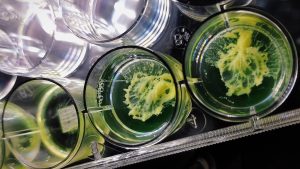
Harnessing the potential of beneficial biofilms for the production of recombinant proteins and other high added-value compounds, and using biofilms for surface protection (probiotics) in the medical and industrial fields.
Prevention and Control
New Biocidal Approaches
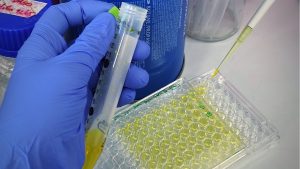
Novel antimicrobial strategies are required to disinfect biofilms from surfaces. Traditional disinfectants have ecotoxic effects and, when misused, may contribute to the development of microbial tolerance.
Our group has been developing novel:
- Biodegradable, environment friendly and sustainable disinfectants with a broad and effective antimicrobial/antibiofilm spectrum, based on the use of phytochemicals and derivatives.
- Particles carrying immobilized (non-leaching) biocides to inactivate microorganisms upon contact.
Antimicrobial Surfaces
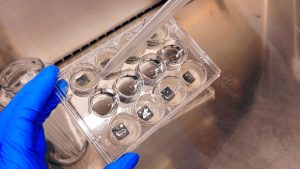
The prevention of microbial adhesion on surfaces is an important strategy to avoid surface contamination, health issues and reduce associated-costs. At BEL, the use of antimicrobial surfaces is an important topic of research, namely on:
- Use and validation of different materials, as metallic alloys, to reduce drinking water microbial contamination.
- Development of antimicrobial surfaces which are anti-adhesive or contact killing using nanomaterials, peptides and polymers.
- Development of biomimetic surfaces for reduced biotic and abiotic fouling.
- testing of antimicrobial surfaces (mainly anti-adhesive and contact-killing) under controlled hydrodynamic conditions.
Celular and Molecular Biotechnology
Nucleic Acids-based Methods

Nucleic acid mimics (NAMs) have been applied to detect clinical, food and environmental pathogens, based on Fluorescence In Situ Hybridization (FISH), both in planktonic cells and in biofilms. At BEL, innovative strategies based on FISH have been developed:
- Integration of FISH with microfluidics for automated detection.
- Combination of FISH with combinatorial labelling and spectral imaging (CLASI-FISH) for multiplex detection.
- NAMs exploration as novel antimicrobials to treat infectious diseases, and as novel in vivo probes to visualize the human microbiome.
Antimicrobial Resistance

The spread of antimicrobial resistant organisms is of global concern, which should be approached through the One-Health initiative. At BEL, new approaches to fight antimicrobial resistance are under study:
- Drug repurposing.
- Phytochemicals and quorum-sensing inhibitors.
- NAMs delivery as a new antimicrobial approach.
